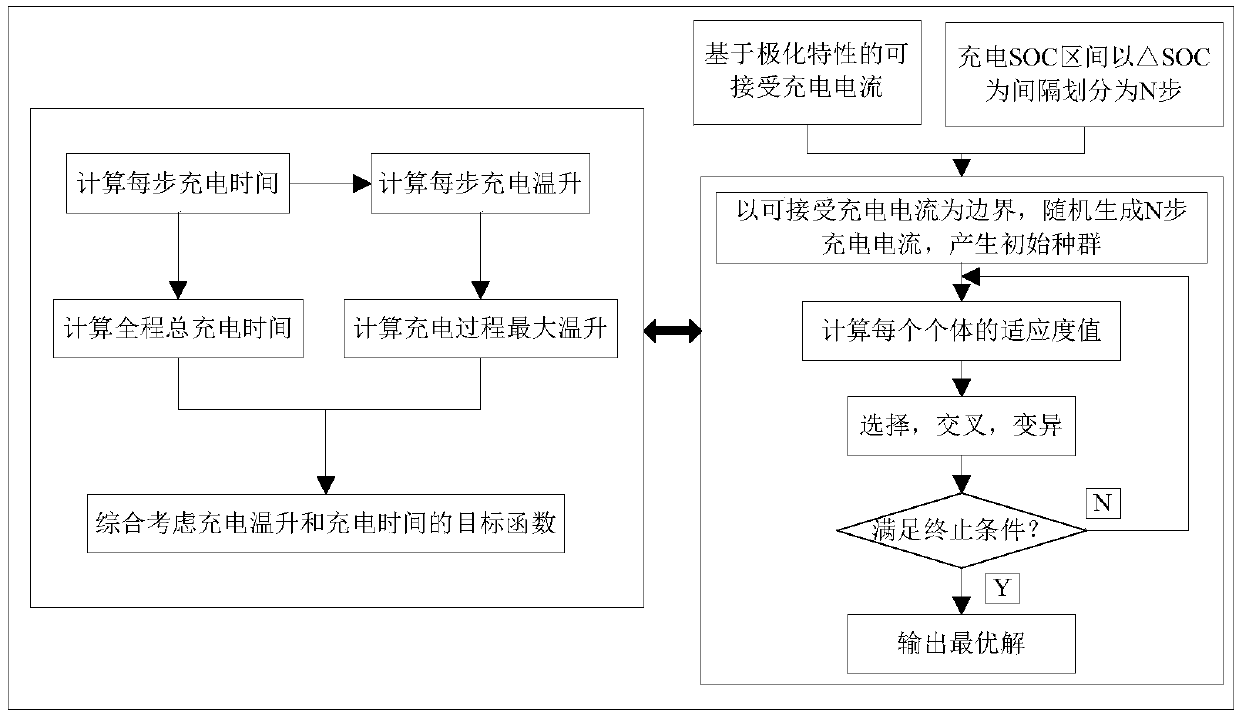An optimized charging method for on-board energy storage lithium-ion batteries for rail transit
A lithium-ion battery and rail transit technology, which is applied in the field of optimized charging of on-board energy storage lithium-ion batteries for rail transit, can solve problems such as loss of battery active materials, excessive polarization voltage, and reduced battery safety, and achieve improved battery performance. The effect of life and charging safety, reducing the temperature rise rate and increasing the charging speed
- Summary
- Abstract
- Description
- Claims
- Application Information
AI Technical Summary
Problems solved by technology
Method used
Image
Examples
Embodiment Construction
[0047] The present invention will be described in further detail below in conjunction with the accompanying drawings.
[0048] S1. Calculate the maximum charging current in the full life cycle of the lithium-ion battery based on the battery degradation mechanism, and use the maximum charging current as the boundary condition for optimal charging current selection.
[0049] When there is no accelerated loss of material in the battery, the charging rate is the critical charging rate. After the accelerated loss occurs in the battery, the capacity decline rate in the cycle charging after the accelerated loss is equal to the decay rate at the moment when the accelerated loss occurs in the battery, and then use the formula ( 1) Calculate the charging current of the battery at different aging stages after the accelerated loss. During the charging process of the battery, the charging current cannot exceed the maximum value of the calculated charging current. The maximum value of this c...
PUM
 Login to View More
Login to View More Abstract
Description
Claims
Application Information
 Login to View More
Login to View More - R&D
- Intellectual Property
- Life Sciences
- Materials
- Tech Scout
- Unparalleled Data Quality
- Higher Quality Content
- 60% Fewer Hallucinations
Browse by: Latest US Patents, China's latest patents, Technical Efficacy Thesaurus, Application Domain, Technology Topic, Popular Technical Reports.
© 2025 PatSnap. All rights reserved.Legal|Privacy policy|Modern Slavery Act Transparency Statement|Sitemap|About US| Contact US: help@patsnap.com



